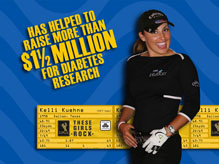Cigarettes have become so depended on that much of the world would go into an extreme frenzy if they were one day unable to get. No doubt someone somewhere would have a pack up cigarettes and you would see people climbing up walls and down buildings to get one cigarette. Just like with that Elmo doll a few years ago, people were trampling over each other for a simple doll who had pretty much became unpopular in today’s world. No doubt cigarettes are somewhat more approachable and more addicting than that of a doll but you get my drift. Cigarettes have become more addicting then any habit out there and people are dying each day for the measure of a simple ingredient, Nicotine.
 Cigarettes have become so depended on that much of the world would go into an extreme frenzy if they were one day unable to get. No doubt someone somewhere would have a pack of cigarettes and you would see people climbing up walls and down buildings to get one cigarette. Just like with that Elmo doll a few years ago, people were trampling over each other for a simple doll who had pretty much became unpopular in today’s world. No doubt cigarettes are somewhat more approachable and more addicting than that of a doll but you get my drift. Cigarettes have become more addicting then any habit out there and people are dying each day for the measure of a simple ingredient, Nicotine.
Cigarettes have become so depended on that much of the world would go into an extreme frenzy if they were one day unable to get. No doubt someone somewhere would have a pack of cigarettes and you would see people climbing up walls and down buildings to get one cigarette. Just like with that Elmo doll a few years ago, people were trampling over each other for a simple doll who had pretty much became unpopular in today’s world. No doubt cigarettes are somewhat more approachable and more addicting than that of a doll but you get my drift. Cigarettes have become more addicting then any habit out there and people are dying each day for the measure of a simple ingredient, Nicotine.
So what’s to become of this imposing epidemic? What are people to do when a bad habit can not simply be dropped? When the scent of another person’s cigarette grabs you and throws you in to world wind of wanting more nicotine into your body. What do you do then?
Researchers have come up with answer, if you are willing to let one little tablet help you that is? Chantix is what I am talking about. Chantix has only been around for a couple of years but has already proven itself top of the line for helping to help people quit smoking. It is a non-nicotine drug taken in pill form that targets those receptors looking for their nicotine. Chantix was approved by the FDA in May of 2006 and had already helped many people quit smoking and move on with a healthier life. Many have suggested that Chantix not only helped reduce their want to smoking but held little symptoms of many other patches and gums out there on the market.
However, I think to understand how Chantix works you might want to know how nicotine works first. People have receptors in their head that are actively looking for nicotine, almost like a little voice bouncing in your brain telling you to grab the cigarette because you will feel better. And mentally that is very true. Once the nicotine gets the receptors in the brain, a little “text” message is sent to the other side of the brain making the delivery of nicotine known which will then allow the receiving side of the brain to produce Dopamine which is the same chemical released during sex. So the pleasure you feel from smoking cigarette through-out your brain when smoking is sometimes compared to sex. I guess that somewhat explains why some people go out for a cigarette afterwards, they can get a double dose of Dopamine to make then feel better longer.
Chantix works two different ways which are very helpful for the necessary achievement of dropping cigarettes. First of all, Chantix works by allowing an easier approach to those annoying symptoms that are found from trying to quit smoking. Another way is that it prevents nicotine effects if a person decides to continue smoking while being treated. Of course that is self-explanatory, if you are going to continue smoking after receiving treatment from habit then Chantix will make sure that you are at least not feeling the additive part of nicotine.
Studies have been done to prove Chantax’s worth out on the market. One study showed a decrease in 44% of people who were full-time smokers while they were treated in 12 weeks. The Center for disease control also gave a compelling study, they stated that more then 44.5 million people just in the United States are smokers. Forty-four and half million! That is a lot of smokers and a lot of people who are going to have an untimely death due to cigarettes. 8.5 million of those people were said to already have developed some form of disease from their smoking habit. Chantix can not help those people gain their lives back after smoking for so many years and developing a disease, but it can help then to stop smoking to enjoy the rest of their lives.
Chantix is given in the form of both a 1 mg blue tablet or a .5 mg white tablet both are needed to ensure you a chance a successful treatment. First you will be told to take the .5 mg white tablet for the first 3 days of treatment; you will only need to take the tablet once daily. Secondly, you will take the same .5 mg tablet twice daily for days 4-7, this will help you to get used to the medicine and trust that you won’t have any bad side effects to it. When taking it twice daily it will be best if it’s taken in the morning with breakfast and then at night with supper. On days 8 through 84 you will be taking the 1 mg blue tablet twice daily and the same rules apply one in the morning and one at night.
If you are choosing to quit smoking then you are making an excellent decision. Smoking can cause countless injuries to your body and it makes you feel as though you have less energy and less motivation to do anything. It can cause kidney disease and countless problems with both you kidney and lungs. On of the major problems suggested with smoking harms in lung cancer, it is one of the biggest causes of deaths in the U.S. You can also find yourself with heart disease, lung diseases, and various forms of cancer even a stroke and some respiratory illnesses.
The main active ingredient in Chantix is Varenicline tartrate which a whitish- yellowish solid powder that in soluble with in water. Some other ingredients in Chantax are microcrystalline cellouse, phosphate, croscamellouse sodium, magnesium state, anhydrous dibasic calcium, Opadry? White which is used for .5 mg tablet. Opadry? Blue and Opadry? Clear are both used for the 1 mg and .5 mg tablets.
Before taking Chantix there are some things you should probably discuss with your doctor. If you have ever had any kidney issues, disease or kidney dialysis then you should tell your doctor because Chantix may not be the right drug for you. Those who are pregnant, trying to become pregnant or who are breastfeeding should let their doctors know because Chantix does not mix well with women who are under those 3 “conditions”.
You should also let your doctor know of any medications or even vitamins you are taking especially if you are taking insulin for diabetes or being treated for asthma or taking blood thinners for decreasing blood clots.
Chantix can be very expensive but it is a very good drug to help you quit smoking. For a 1-month dosage you can buy it from a pharmacy for $100 to $150 it all depends on your insurance provider though.
They are some side effects that you should know about that could accompany Chantix so you must be aware of them. The most common side effects complained about is a nausea most times the side effect will be released once your body gets used to the medication itself. Some other side effects include a headache, insomnia, gas, constipation and changes in people’s dreams. Again, these side effects should go away with the post introduction the medicine, however if they do not then you should go see a doctor because this medicine may not be for you.
 Playing Sports With Diabetes: Different types of sports is a great opportunity for all individuals to have. For those with diabetes, playing sports may require a little more preparation than for those who do not have diabetes. It is important to consider the various factors involved to ensure that the sports are played in a safe fashion with one’s blood sugar level in mind.
Playing Sports With Diabetes: Different types of sports is a great opportunity for all individuals to have. For those with diabetes, playing sports may require a little more preparation than for those who do not have diabetes. It is important to consider the various factors involved to ensure that the sports are played in a safe fashion with one’s blood sugar level in mind. Diabetes And The Common
Diabetes And The Common  Cigarettes have become so depended on that much of the world would go into an extreme frenzy if they were one day unable to get. No doubt someone somewhere would have a pack of cigarettes and you would see people climbing up walls and down buildings to get one cigarette. Just like with that Elmo doll a few years ago, people were trampling over each other for a simple doll who had pretty much became unpopular in today’s world. No doubt cigarettes are somewhat more approachable and more addicting than that of a doll but you get my drift. Cigarettes have become more addicting then any habit out there and people are dying each day for the measure of a simple ingredient, Nicotine.
Cigarettes have become so depended on that much of the world would go into an extreme frenzy if they were one day unable to get. No doubt someone somewhere would have a pack of cigarettes and you would see people climbing up walls and down buildings to get one cigarette. Just like with that Elmo doll a few years ago, people were trampling over each other for a simple doll who had pretty much became unpopular in today’s world. No doubt cigarettes are somewhat more approachable and more addicting than that of a doll but you get my drift. Cigarettes have become more addicting then any habit out there and people are dying each day for the measure of a simple ingredient, Nicotine. Kelli Kuehne is a famous golfer diagnosed with diabetes. She was born in 1977 from Dallas, Texas. The Kuehne family is full of famous golfers as well. Her two bothers activity plays the sport and wins tournaments. Kuehne has been a part of several championship matches including United States Girl’s Junior Amateur, United States Women’s Amateur and the British Ladies Amateur. She has won all three titles. Kuehne began the professional tour and finally won the LPGA Corning Classics in 1999. Kelli Kuehne is 31 years old.
Kelli Kuehne is a famous golfer diagnosed with diabetes. She was born in 1977 from Dallas, Texas. The Kuehne family is full of famous golfers as well. Her two bothers activity plays the sport and wins tournaments. Kuehne has been a part of several championship matches including United States Girl’s Junior Amateur, United States Women’s Amateur and the British Ladies Amateur. She has won all three titles. Kuehne began the professional tour and finally won the LPGA Corning Classics in 1999. Kelli Kuehne is 31 years old. Dogs Helping Diabetics: Dogs can be trained for almost anything. There are dogs that are trained to be police dogs, watch dogs, rescue dogs. companion dogs and seeing eye dogs. Did you know that dogs can also be trained as a medical alert dog for diabetics? These dogs can detect when a diabetics blood glucose goes to low and will alert them. There are organizations all over the country that are training dogs to help people just like you who suffer from diabetes.
Dogs Helping Diabetics: Dogs can be trained for almost anything. There are dogs that are trained to be police dogs, watch dogs, rescue dogs. companion dogs and seeing eye dogs. Did you know that dogs can also be trained as a medical alert dog for diabetics? These dogs can detect when a diabetics blood glucose goes to low and will alert them. There are organizations all over the country that are training dogs to help people just like you who suffer from diabetes.